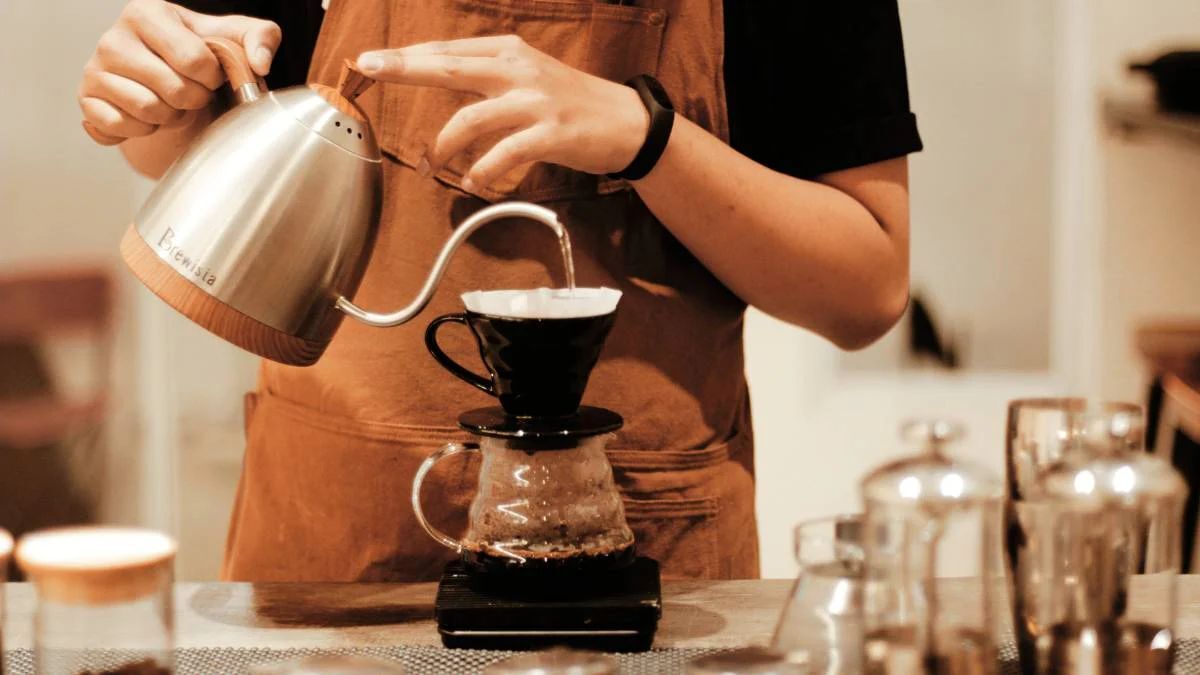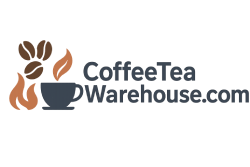
Brewing coffee is an art and a science. The journey from a humble bean to a perfect cup is a rewarding ritual, and mastering a few key steps can transform your daily coffee from good to consistently great. Whether you're a seasoned barista or just starting out, this guide will walk you through the fundamentals of brewing coffee that unlocks the best flavor in every single bean.
The 6 Golden Rules of Brewing Coffee
Before exploring different methods, every great cup starts with the same core principles. Follow these rules to build a flawless foundation for your brew.
1. Start with a Clean Coffee Maker
It sounds simple, but it's the most overlooked step. Coffee oils and mineral residue from water build up in your machine over time, creating a bitter and rancid taste that overpowers the delicate notes of your coffee. Because this happens gradually, it's often hard to notice. Regularly clean your brewer, carafe, and filter basket to ensure the only thing you taste is fresh, delicious coffee.
2. Use Fresh, Filtered Water
Coffee is 98% water, so the quality of your water directly impacts the final taste. If your tap water tastes good, it's likely fine to use. However, if your water is hard (high in minerals) or has a chlorine taste, it can make your coffee taste off. For the purest flavor, consider using filtered or bottled spring water. Always start with cold, fresh water for the best extraction.
3. Buy Fresh Coffee and Keep It Fresh
Coffee's greatest enemies are air, light, heat, and moisture. To preserve its flavor, store whole bean coffee in a cool, dark, dry place inside an opaque, airtight container. Pre-packaged options like nitrogen-flushed pillow packs and filter packs are excellent for convenience, as they lock out the elements until you're ready to brew.
4. Use the Right Coffee-to-Water Ratio
The "right amount" of coffee is subjective, but a great starting point is the "Golden Ratio." This is generally defined as one to two tablespoons of ground coffee for every 6 ounces of water. We recommend starting with 1.5 ounces of ground coffee for a standard 12-cup pot and adjusting from there. If it's too weak, add more coffee next time; if it's too strong, use a little less.
5. Brew at the Correct Temperature
Temperature is critical for proper flavor extraction. The ideal brewing temperature for most coffee methods is between 195°F and 205°F (90-96°C). This is just below the boiling point. If the water is too hot, it will scorch the grounds and create a bitter taste. If it's too cool, your coffee will be under-extracted and taste weak or sour. Most automatic drip machines are calibrated for this range.
6. Keep Your Brewed Coffee Fresh
Once brewed, coffee's flavor begins to degrade quickly. Leaving a carafe on a hot "burner" plate will boil the coffee, creating a burnt, unpleasant taste within 15-20 minutes. To preserve the flavor and aroma, immediately transfer your brewed coffee into an airtight, insulated carafe or thermos. This will keep it hot and delicious for a much longer period.
A Guide to Coffee Brewing Methods
From simple and automatic to manual and complex, each brewing method offers a unique taste profile. Here’s a look at the most popular options to help you find what’s right for you.
Drip Filtration
The drip method is the most widely used brewing method in the world, known for its consistency and convenience. An automatic drip machine heats water and sprays it over coffee grounds held in a filter. The brewed coffee then drips into a carafe below. High-quality paper filters (oxygen-whitened, not chlorine-bleached) produce a clean, classic cup, though they can absorb some of the coffee's natural oils.
Steeping (French Press)
Many coffee purists argue that the French press produces the best, most flavorful coffee. This method involves steeping coarse coffee grounds directly in hot water for about four minutes before pressing a metal mesh filter down to separate the grounds from the liquid. Because no paper filter is used, all of the coffee's oils remain in the final brew, resulting in a rich, full-bodied cup.
Pressurized Infusion (Espresso)
Espresso is a concentrated form of coffee brewed by forcing a small amount of nearly boiling water under pressure through finely-ground coffee beans. This process extracts a bold, robust flavor with a signature layer of "crema" on top. Making a perfect espresso shot is a skill, but it serves as the foundation for popular drinks like lattes, cappuccinos, and Americanos.
Vacuum Filtration (Siphon)
The vacuum or siphon brewer is a dramatic and visually stunning method. It uses vapor pressure to push hot water from a lower chamber up into an upper chamber to mix with the coffee grounds. When the heat is removed, a vacuum is created, pulling the brewed coffee back down through a filter into the lower chamber. This process yields an exceptionally clean, clear, and flavorful cup of coffee.
Decoction (Boiling or "Cowboy Coffee")
As the oldest extraction method, decoction simply involves boiling coffee grounds with water. While it can produce a decent cup in a pinch, it often leads to over-extraction and bitterness because the water temperature is not controlled. It’s a rustic method born out of necessity but is generally outperformed by modern techniques.
Percolation
Popular in the mid-20th century, percolators brew coffee by continually cycling boiling water through the coffee grounds. This constant re-brewing process often leads to a very bitter and over-extracted cup, which is why percolators have largely been replaced by automatic drip machines for daily brewing.
Frequently Asked Questions About Brewing Coffee
What is the best temperature for brewing coffee?
The ideal temperature is between 195°F and 205°F (90–96°C), which is just below boiling. This range extracts the best flavors without burning the coffee grounds and creating bitterness.
Can I use tap water to brew coffee?
Yes, but filtered or spring water is often better. Tap water that is high in minerals ("hard water") or chlorine can negatively affect the taste of your coffee and cause scale buildup in your machine over time.
How much coffee should I use per cup?
The standard "Golden Ratio" is one to two tablespoons of ground coffee for every 6 ounces of water. We recommend you start there and adjust based on whether you prefer your coffee stronger or milder.
Which brewing method makes the best coffee?
The "best" method is a matter of personal taste. The French press offers a rich, full-bodied flavor. Drip coffee is convenient and consistently produces a clean cup. Espresso provides a bold, concentrated shot. Experiment with different methods to discover your favorite.
Should I reuse coffee grounds?
No, you should never reuse coffee grounds. The first brew extracts all the desirable flavors and aromas. A second brew will only result in a weak, bitter, and hollow-tasting cup of coffee. Always start with fresh grounds for the best quality.
